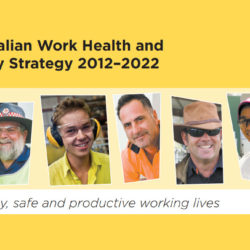The Australian Work Health and Safety Strategy (2012 -2022) was released by Safe Work Australia back in 2012. Now, that’s a long time ago in our fast-paced society, so at the halfway point, an updated version was republished earlier this year following a mid-term review.
Over the next three blogs, we’ll be looking at what the updated version hopes to achieve by 2022 and how it’s being applied to the manufacturing and transport industries.
The strategy was a collective effort, combining the expertise of WHS regulators, governments, unions, employer organisations, industry groups, safety organisations and the public to develop three national targets underpinned by two major principles:
- All workers, no matter the occupation or the conditions of their employment (contract, part-time, casual or permanent full-time) has the right to a healthy and safe working environment
- A well-designed healthy and safe work environment will empower workers to have more productive working lives
National targets to achieve by 2022
- Reduce the number of worker fatalities due to injury by 20%
- Lower the incidence rate of compensation claims which result in more than a week recovery period by 30%
- Decrease the incidence rate of claims for musculoskeletal disorders (one of the biggest compensation claims in Australia) that result in an extended time off work by 30%
The 7 action areas
The vision is simple: Target a range of priority areas that will set the framework for a healthier and safer work environment for all. It will be a coordinated effort across the following areas:
- Healthy and safe work design
- Supply chains and networks
- Health and safety capabilities
- Leadership and culture
- Research and evaluation
- Government
- Responsive and effective regulatory framework
Australia’s priority industries
Some industries are always going to have the potential for more danger. However, the strategy has identified seven industries who are at crisis point due to the high rate of injury and fatalities:
- Agriculture
- Road transport
- Manufacturing
- Construction
- Accommodation and food services
- Public administration and safety
- Health care and social assistance
Priority conditions claimed in the workplace
Did you know that every day, 10 tradies are injured at work? Across our industry, musculoskeletal conditions and psychological stressors are the major causes of workplace incident and injury. This is clearly reflected in the work-related conditions that are a priority for the nation. The full list includes:
- musculoskeletal disorders
- mental health conditions
- cancers (including skin cancer and asbestos-related cancers)
- occupational lung diseases
- contact dermatitis, and
- noise-induced hearing loss.
Progress so far
An exhaustive list of reports, best-practice frameworks, statistical evidence, analysis, events, awareness months, seminars, reviews of current WHS laws and Codes of Practices and support for the implementation of new procedures are only a fraction of what Safe Work Australia has achieved in the last five years. Some of their standout work revolved around progress towards psychologically healthy and safe workplaces, hazardous chemical information systems, review of quad bikes and action on explosives. It can all be viewed in the Safe Work Australia Annual Report.
The latest statistics on injury and fatalities in the workplace look good too. According to their annual report, there are now only 1.5 fatalities per 100,000 workers (down from 2.5) and the fatality rate has reduced by 49% since 2007.
The highest fatality industries are still transport and agriculture, however. There are 7.5 fatalities per 100,000 workers in the transport sector which have decreased 51% since 2007 and 14 fatalities per 100,000 workers in the agriculture sector which has only reduced 7% since 2007, proving there is more work to be done in this area.
Ongoing activity of the strategy from now to 2022
The WHS activity doesn’t stop here and after a mid-term review, Safe Work Australia has altered course and considered the changes in the Australian workspace over the past five years. After all, a lot can change in a short amount of time.
Some of the activities specific to Queensland which are currently in the works under the strategy include:
- Priority disorders strategy 2016 – 2022
- Mental health at work action plan 2016 -2022
- Road freight industry action plan 2016 – 2022
- Horticulture industry action plan 2016 – 2022
- Healthy worker initiative to prevent chronic disease in the workplace
- SMB free WHS advisory services
- Young worker programs to engage apprentices and younger workers in the priority industries to engage in awareness of WHS
- Zero harm at work leadership program
- Queensland specific awareness campaigns
- Principles of good work design handbook for businesses
- Guides for labour hire, safety of on-hired workers and safe design of cattle crates
Stay tuned for our next article which will delve into the transport sector and why it’s identified as a national priority.
Do you have thoughts on the Australian Work Health and Safety Strategy or ways to improve Australia’s the health and wellness of Aussie workers? Join the conversation on Twitter.
